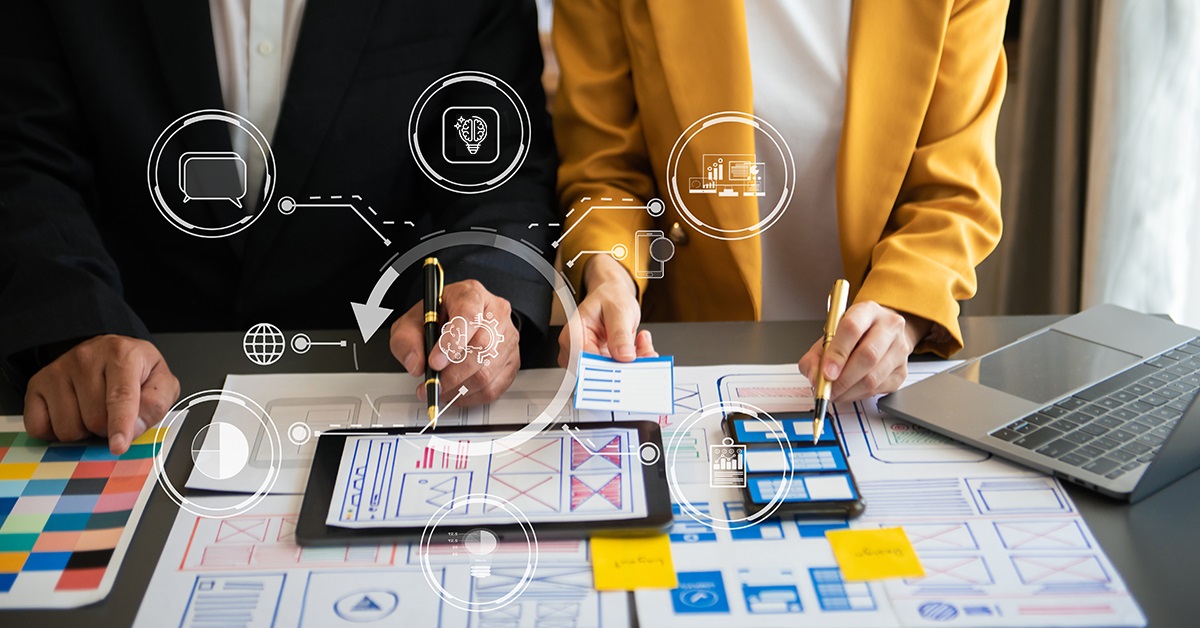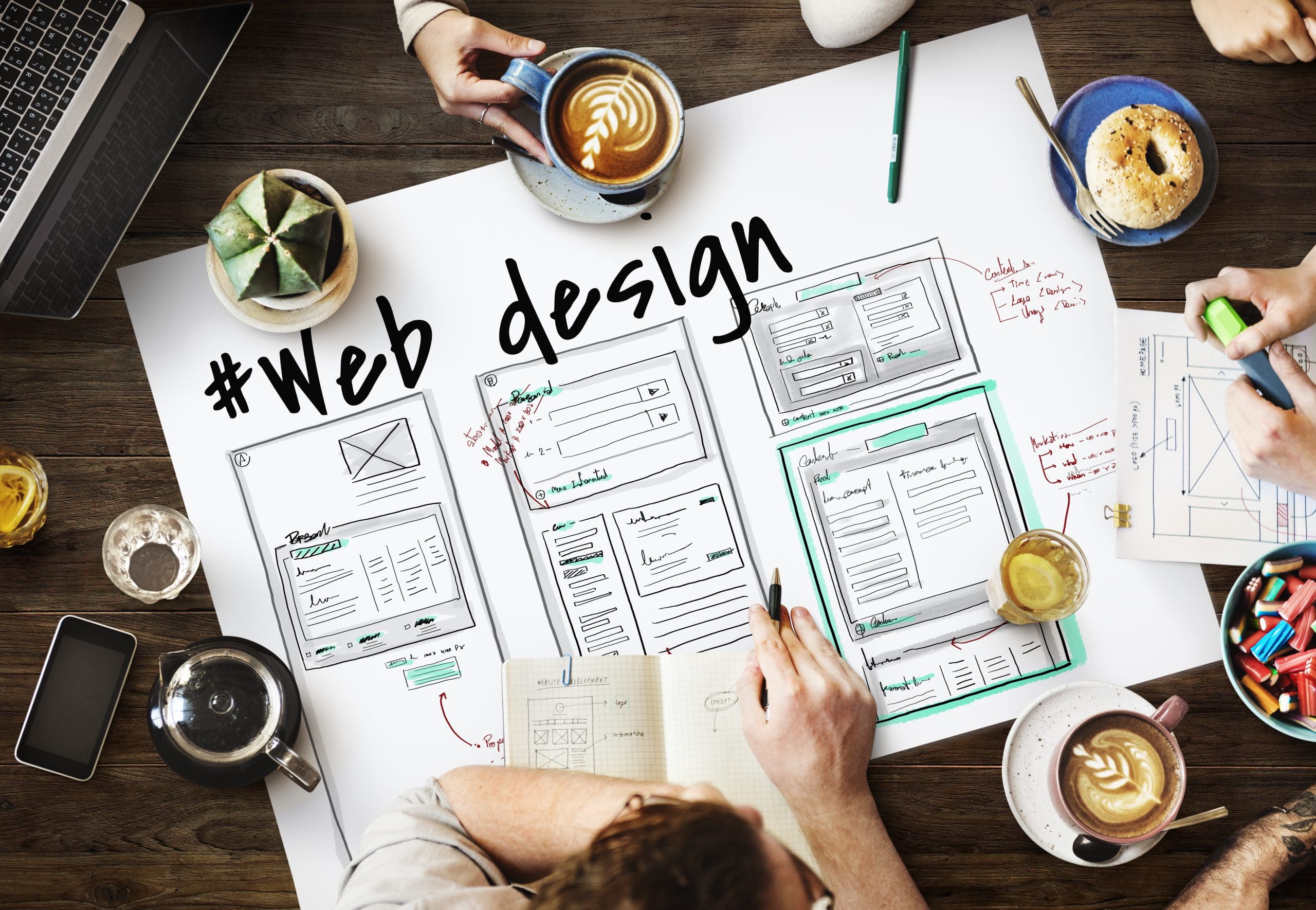Checklist for choosing the right Web Design services for your brand
Just How Ingenious Web Design Can Change Your Brand Identity
Innovative web design plays a crucial function in shaping a brand name's identity. It works as the electronic storefront, influencing impressions and user engagement. Thoughtful design choices can develop memorable experiences and foster commitment. The influence goes beyond aesthetics. Recognizing the underlying concepts of efficient web design can reveal its true capacity. What strategies could be employed to guarantee that a brand not just stands apart but also reverberates with its target market?
The Value of First Impressions in Web Design
Exactly how crucial is a very first impact in the domain of web design? It offers as the first gateway to user engagement, identifying whether site visitors will explore further or abandon the website. A website's visual and performance can greatly influence assumptions of a brand name's credibility and professionalism and reliability. In an age where electronic interactions are instant, users create opinions within secs, making aesthetic charm and instinctive navigating vital.
A reliable impression can foster trust and urge exploration, while a badly made interface might stimulate frustration and skepticism. Elements such as color design, typography, and design all add to this initial perception. Additionally, uniformity in design throughout all pages reinforces brand identity. Therefore, the relevance of impressions in web design can not be overstated; they not just determine user retention but additionally effect overall user experience and satisfaction, eventually forming a brand's track record in an affordable on the internet landscape.
Crucial Element of Efficient Web Design
A website's efficiency rests on a number of crucial elements that operate in consistency to develop a positive user experience. Instinctive navigating is important, enabling customers to situate details easily. Clear and succinct material enhances understanding and interaction, while calculated use whitespace prevents overwhelming the audience.
Receptive design is an additional necessary facet, making certain that the website works well on various devices and display sizes. Fast loading times are necessary; slow-moving websites can cause high bounce rates.
Visual elements, including top quality photos and an attractive format, add to a cosmetically pleasing experience that resonates with users. Availability should not be ignored, as it guarantees that all users, no matter of ability, can engage with the website.

How Color Psychology Influences Brand Name Perception
Shade psychology plays an essential duty fit brand perception, influencing customer emotions and habits in extensive ways. Different colors stimulate specific feelings; for instance, blue commonly conveys count on and expertise, while red can generate exhilaration or urgency. Brands strategically utilize these organizations to boost their identity and get in touch with their target market.
A tech company could use a streamlined blue combination to task reliability, while a food brand might decide for lively reds and yellows to boost cravings and power. The consistency of shade across numerous systems enhances brand recognition and promotes loyalty

Enhancing User Experience With Ingenious Functions
Various cutting-edge attributes can significantly enhance user experience in web design, creating an extra engaging and instinctive interaction for visitors. Interactive elements such as vibrant content, computer animations, and responsive style assurance that customers remain astounded and entailed. Incorporating attributes like chatbots can offer real-time aid, enhancing interaction and addressing user questions promptly.
Furthermore, individualized material based upon user habits fosters a tailored experience, motivating extended interaction. Access features, consisting of voice navigating and display viewers, ensure inclusivity for all customers, better improving total satisfaction.
Implementing intuitive navigating, such as sticky food selections and breadcrumb routes, permits users to locate info effortlessly, reducing stress. Incorporating micro-interactions, like subtle computer animations Resources throughout button clicks, can supply favorable feedback, reinforcing user activities. Eventually, these cutting-edge functions work collectively to create a pleasurable and smooth user experience, considerably improving the overall understanding of a brand name.
Instance Studies: Brands That Transformed Their Identity Through Web Design
Internet layout plays a critical duty in shaping a brand name's identification, as evidenced by numerous business that have actually successfully redefined their picture via ingenious online experiences. A noteworthy instance is Airbnb, which revamped its site to concentrate on storytelling and user-generated content. This strategy not just boosted user involvement however likewise reinforced its community-centric brand identification.
The rebranding of Dropbox via a minimalist style stressed simpleness and functionality, aligning completely with its mission to make file sharing easy. The new visual identity promoted a contemporary and reliable image.
Another situation is Mailchimp, which changed from a basic email marketing tool to a full-fledged advertising system. Its vivid style and spirited images show a innovative and approachable brand personality, appealing to a wider audience.
These makeovers show just how tactical web design can substantially affect understanding, inevitably driving brand loyalty and market growth. - Website Design Agency
Often Asked Inquiries
How Much Does Cutting-edge Web Design Usually Price?
Cutting-edge web design normally sets you back between $2,500 to $15,000, relying on complexity, functions, and designer knowledge. Custom solutions may surpass this range, mirroring the financial investment in top quality and capability that find more information boosts user experience.

What Are the Most Recent Web Design Trends to View?
The newest web design trends include minimalism, vibrant typography, dark setting, interactive components, and immersive storytelling. These components enhance user experience, guaranteeing internet sites continue to be appealing and visually appealing in a significantly digital landscape.
How much time Does a Website Design Job Normally Take?
A website design task usually takes in between 4 to twelve weeks, depending upon elements such as complexity, client responses, and the style team's work. Timelines may differ significantly based on specific project demands and objectives.
Can I Upgrade My Internet Site Without Shedding Search Engine Optimization Rankings?
Yes, a site can be revamped without shedding search engine optimization positions. Mindful preparation, keeping link structures, maximizing on-page elements, and updating back links help protect visibility in internet search engine throughout and after the redesign procedure.
What Operating systems Are Best for Implementing Ingenious Web Design?
Popular platforms for innovative web design include WordPress, Wix, and Squarespace. Each deals special features, themes, and modification choices, enabling users to create useful and aesthetically attractive web sites that straighten with their brand name identity.
Ingenious web style plays Continued an essential role in shaping a brand's identification. Numerous cutting-edge features can significantly boost user experience in web design, creating a more instinctive and engaging communication for site visitors. Website Design Agency. Interactive elements such as dynamic content, computer animations, and receptive layout guarantee that customers remain captivated and involved. Internet style plays a critical function in shaping a brand's identity, as shown by different companies that have successfully redefined their picture through cutting-edge on-line experiences. An internet design task commonly takes in between 4 to twelve weeks, depending on factors such as intricacy, customer feedback, and the layout group's workload